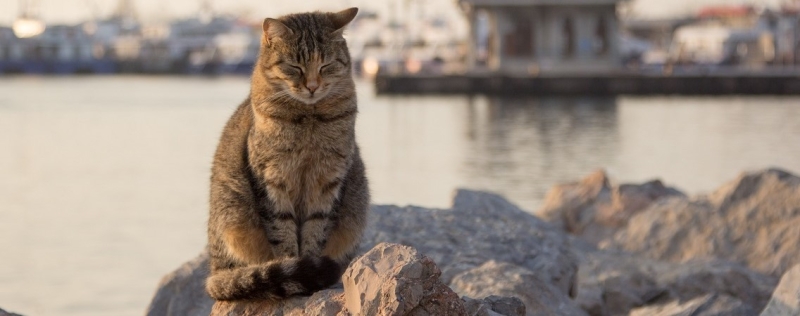
Any vacation photo will sparkle with new colors if there is a cat in it. There are many locations where furry inhabitants feel as imposing and comfortable as possible. World Cat Day is celebrated on March 1 – an excellent occasion to talk about cities in Russia and the world where you can meet four-legged friends at every step.
St. Petersburg
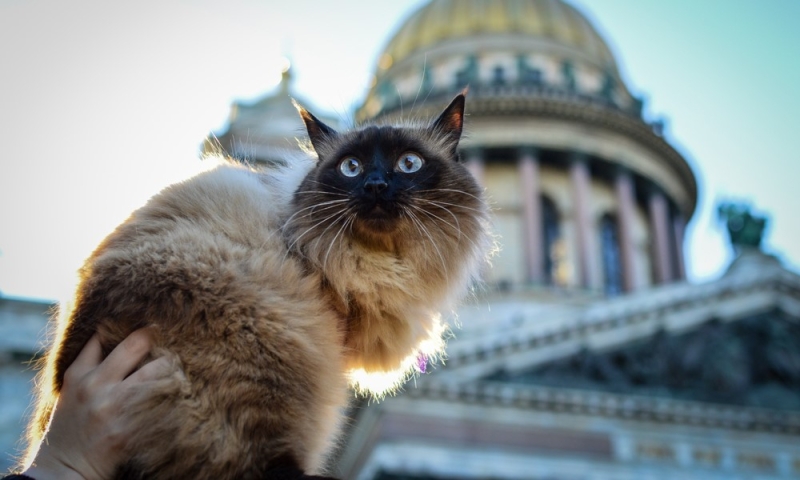
Cats have become one of the tourist symbols of the Northern capital, displacing even famous architectural landmarks as souvenirs. Fluffy townspeople stroll along the avenues, sit on rooftops, accompany fishermen on embankments and inhabit courtyard areas. For example, on a warm sunny day you can often see them basking on the hoods of parked cars. The mustachioed residents even have their own holiday – World Day of St. Petersburg Cats, which is celebrated on June 8.
There are also serious cats in St. Petersburg who serve in the Hermitage. Full board is provided at the workplace for valuable employees. They live in a special 20-kilometer basement and can walk throughout the entire territory of the palace, except for the exhibition halls. Each animal has a passport, a bed and a bowl. A professional veterinarian monitors the health of the cats. According to legend, the first cats appeared in the palace chambers under Peter I. But they began working at the Hermitage in Elizabethan times and for several centuries protected the premises and museum valuables from rats. In the 1960s, the mustachioed guards were dismissed and decided to poison the rodents using chemicals. However, this method turned out to be ineffective, and the cats were again allowed into the Hermitage. Today, about 50 animals live in the palace.
On the streets and courtyards of St. Petersburg you can find many images of cats: drawings, sculptures, mosaics. According to one version, the elegant cat figurines on the cornice of the Eliseevsky store are reminiscent of the events of the mid-20th century. During the siege of Leningrad, almost all the city’s cats died, and the rats that multiplied began to threaten not only museum exhibits, but also people’s health. Several thousand cats, which were specially brought to the Northern capital from other regions of Russia, helped to destroy rodents that carry infections. And on the wall of one of the buildings of the First St. Petersburg State Medical University. I.P. Pavlova, a monument was erected to experimental cats who made a great contribution to scientific research.
How to get there: by train, plane or car from Moscow along the M11 highway.
Where to stay:
At the hotel AKYAN — from 3,300 rubles* per day.
At the hotel “Dostoevsky” — from 3,600 rubles* per night.
At the boutique hotel “Gamma” – from 8,300 rubles* per night.
Kaliningrad region
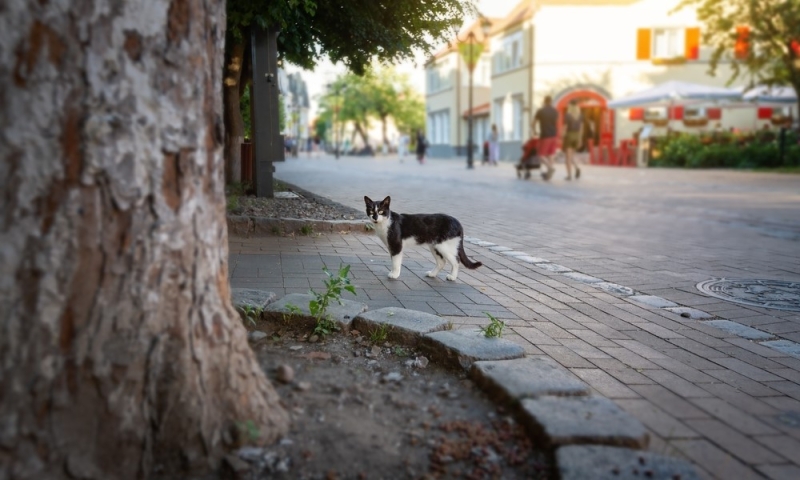
It’s not for nothing that this region is called the “cat” capital of Russia. The mustachioed residents captured the attention of tourists in the 2010s, when a private entrepreneur opened the Murmurarium cat museum in an old water tower in Zelenogradsk. The collection, which occupies three floors, contains more than 4,000 exhibits. The tower’s caretaker is the black cat A’murr, whose image adorns various museum souvenirs.
In the wake of high interest in “Murmurarium”, the authorities of Zelenogradsk decided to better integrate the “cat” theme into the tourist image of the city. Walking along the streets of the resort, you can notice numerous art objects depicting not only individual animals, but also various everyday scenes with their participation.
In the center of Zelenogradsk there are special lawns with houses where street cats live. Any passerby can feed them by purchasing a suitable portion of food from a vending machine nearby. In addition, the maintenance of furry Zelenograd residents, including food and medical care, is prescribed in the city budget.
But don’t think that all the cats in Zelenogradsk live on government subsidies. Some of them go to work in numerous cafes, where they are responsible for the warmth, comfort and atmosphere. For example, one of them is home to the cat Bufetik, and if he is away from work for a long time, guests are asked to inform the administrator about this.
The cult of cats in the Kaliningrad region is associated with the Prussian historical heritage. According to an old legend, the cat was the keeper of the keys to Köninsberg, as Kaliningrad was formerly called. The bronze symbol of the city today guards the Royal Gate. According to the superstition, if you make a wish and rub its tummy, the chances of your dream coming true increase. Another plump guard peers curiously from the loophole of the Friedrichsburg Gate. They throw coins into his plate for good luck.
How to get there: by plane to Khrabrovo airport.
Where to stay in Kaliningrad:
At the Villa Lana hotel – from 3,800 rubles* per night.
At the hotel “Crystal” —from 3,900 rubles* per night.
At the Eliza BonApart Hotel —from 4,000 rubles* per day.
Where to stay in Zelenogradsk:
At the FishDorf hotel – from 4,700 rubles* per night for two.
At the Europe Hotel – from 5,000 rubles* per night for two.
At the Tchaikovsky Hotel – from 5,700 rubles* per night for two.
Voronezh
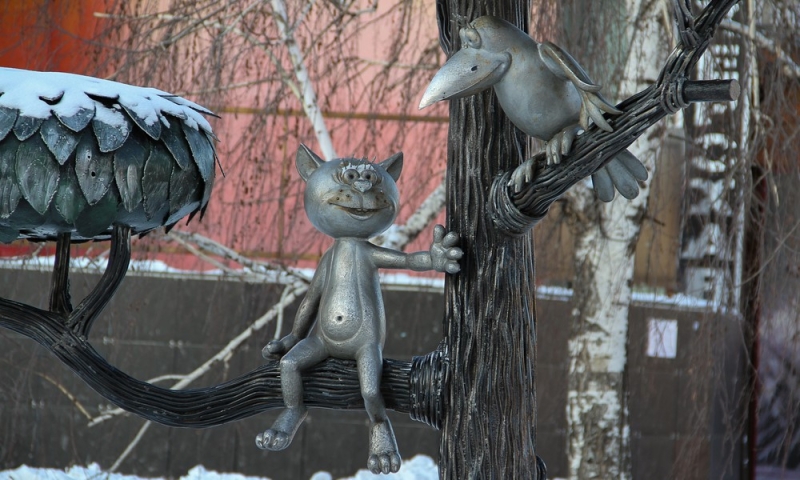
Voronezh is included in the list of “cat” cities thanks to just one small animal – the main character of the popular Soviet cartoon “Kitten from Lizyukov Street”. According to the plot, the kid wanted to become a big and scary beast, of which all the dogs in the area are afraid. A local crow fulfilled this wish, turning him into a hippopotamus. Having experienced all sorts of adventures in a new form, the kitten realized “that there is no city anywhere more beautiful than Voronezh.”
In 2003, a sculpture appeared on General Lizyukov Street that depicts a kitten and a crow on a tree. The children came up with the design for the monument. And now taking a photo with him is a good omen and a good reason to visit Voronezh for the weekend.
How to get there: by bus or train from Paveletsky station in Moscow, then by taxi to st. General Lizyukova, 4.
Where to stay:
At the hotel “AZIMUT City Hotel Voronezh” – from 4,000 rubles* per night.
At the Degas Hotel —from 4,900 rubles* per day.
At the Marriott Voronezh hotel —from 5,900 rubles* per night.
Istanbul
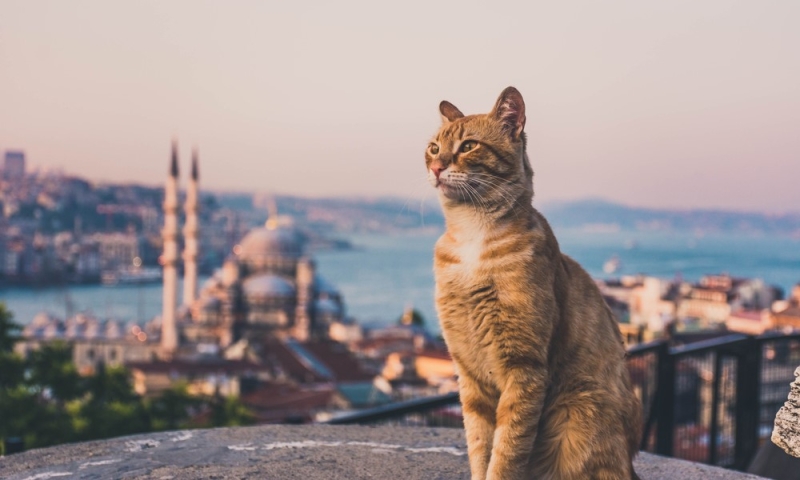
It’s rare that a tourist will come from Istanbul without photographs of cats warming a barrel on steep street stairs. In this city, furry animals live so freely that not every one of them would want to become a pet. They are fed literally everywhere: local residents place food on the doorsteps of apartment buildings and do not refuse to eat in numerous cafes. And there’s nothing to say about fish feasts on the piers and embankments! According to popular belief, it is cats that can tell Allah the truth about the people who looked after them.
In Islam, a cat is considered a pure animal and can even enter a mosque. For example, there are permanent mustachioed inhabitants in the ancient Hagia Sophia. The companion of the Prophet Muhammad Abdur-Rahman was called the “father of cats” because he wore these animals in his sleeves. There is a beautiful legend about the mythical Muizza, the personal pet of the Prophet Muhammad. During one of the sermons, the animal fell asleep on the hem of its owner’s robe. In order not to disturb her sleep, the prophet cut off the piece of clothing on which she was dozing. In another legend, a cat killed a snake that crawled into the prophet’s sleeve and saved him from death. True, experts in the field of legends say that Muizza most likely never existed.
How to get there: by plane from Moscow to Istanbul.
Where to stay:
At the Royal Bosphorus Hotel —from 5,300 rubles* per night.
At the Meroddi La Porta Hotel —from 6,300 rubles* per night.
At the Recital Hotel – from 8,500 rubles* per day.
*Prices are current at the time of publication.

